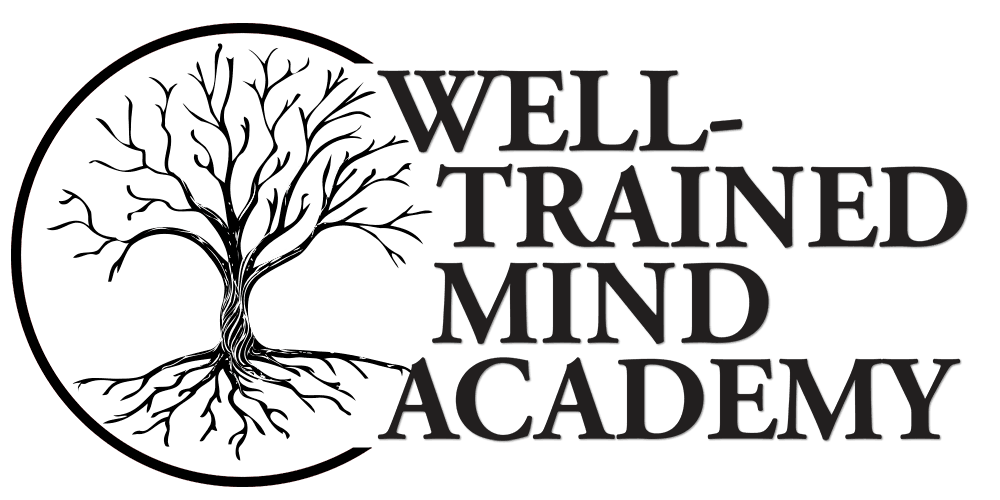Kayla Meyers’s Favorite Writing Assignments

Now in my sixth year with the Well-Trained Mind Academy, the beginning of the academic year takes on a predictable rhythm. I review my rosters, update my Blackboard pages, refresh my syllabi, and welcome my new students. An essential part of my preparation for the new year is to review and tweak my assignments to be even better for the new cohort. This part of school year prep is my favorite because I get to revisit favorite assignments that I can’t wait to teach, renewing my excitement for the year to come!
My favorite writing assignments can generally be grouped by their purpose and benefit to students. No matter what level of writing I’m teaching, these types of assignments will bubble up in one form or another:
Contents
1) The Breakdown
At some point in the year, each of my writing classes attempt their first research paper for the course. To refresh and hone my students’ research and planning skills, I like to break these papers down into smaller assignments. I often ask first for a list of sources, then the notes, the outline, and sometimes a partial draft. By dividing a multi-step essay into smaller assignments, I’m able to track their progress and help course-correct as needed. Students also benefit from these more digestible steps; they see that they can easily tackle large papers.
2) The New Media Assignment
Whether it’s movies, comics, or fine art, there is always one assignment in each of my classes that introduces students to an analysis of different types of media. These assignments ask students to apply the same skills they use for thinking about literature in an analysis of visual culture. Of course, students are fond of these assignments. Who doesn’t love getting to watch a movie or read a comic for class? But these lessons also sharpen their critical thinking skills. They show students that they can apply the same analysis we do in class to the media and information they encounter in their everyday lives.
3) Understanding Themes
In the early stages of writing, students are taught to order the information for their essays by chronology. This is a first order system of organization. But, as we progress, students are pushed to learn how to synthesize details and information into groups based on themes and shared qualities. This challenges students because they must transition from a familiar system to a new system of essay organization that requires more abstract thinking. These assignments are my favorites because they push students in their development, closer to the kinds of essays they will develop in college.
4) Editing Practice
Learning how to apply edits and criticism to your writing is one of the most taxing exercises. No one enjoys confronting the mistakes they’ve made, let alone thinking critically about them. But this process is one of the best ways for students to practice better writing. Whether workshopping in class, asking students to complete “rewrites,” or offering extra credit for revised work, I bake this practice into my writing assignments. The editing process usually becomes a fun exercise as students grow more accustomed to it. I love the process from start to finish because it is exciting to see students grow and mature in their editing practice.
5) The Annotated Bibliography
I am obsessed with sources. I mean, I wrote a book on best research practices and how to credit sources. So, obviously, teaching how to find and evaluate sources for a paper is an essential part of my classes. Annotated bibliographies push students to practice articulating why they’ve chosen a source and showing its benefit to their paper so that they can directly apply these lessons. This assignment is deceptively simple, but requires deep analysis and sharpens students’ ability to critically assess sources.
Of course I love these writing assignments, and it turns out my students do, too! My Expository Writing III students consistently leave the class saying the movie review is their favorite assignment of the year. In all of my classes, I get emails asking for opportunities to workshop and revise their papers. This shows me that students love the process-orientated assignments.
You can incorporate these assignments into your own homeschool. Try applying a method of analysis learned in one subject to something else. For example, apply the scientific method to baking, or make a historical timeline based on weekend activities over the course of a month. If your student shows interest in a new hobby, have her create an annotated bibliography about the subject. The skills and benefits in these activities extend well beyond writing. I hope they’ll become your favorite at-home assignments, too!

By Kayla Meyers, Writing Instructor
I earned my B.A. and M.A. in American Studies from the College of William & Mary. In addition to teaching research and composition for the Well-Trained Mind Academy, I’ve coordinated many education focused conferences and events, including SXSW EDU. I write broadly on topics in topics in pop culture, politics, teaching pedagogy, and writing practice. I recently wrote Who Said What? with the Well-Trained Mind press, which guides writers through the tricky process of evaluating sources to produce accurate and clear writing.
